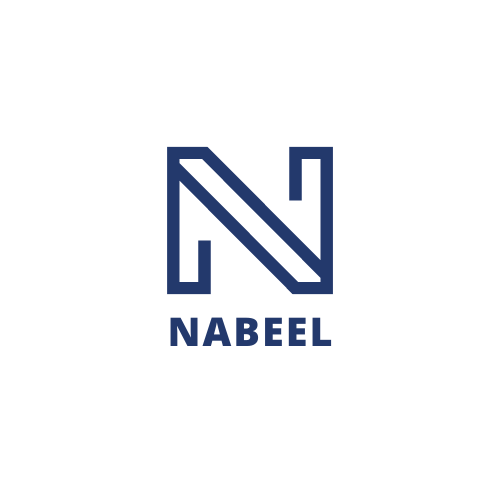Microsoft Teams vs. Slack: Which to Choose in 2025?
In a world where remote work and digital collaboration are the norms, choosing the right communication tool can make or break your team’s productivity. As we look towards 2025, two platforms continue to dominate the conversation: Microsoft Teams and Slack. But which one is the right fit for your team? Let’s dive in and explore the features, strengths, and potential drawbacks of each platform to help you make an informed decision.
Introduction
The battle between Microsoft Teams and Slack has been ongoing for years, with both platforms offering robust features that cater to different aspects of team collaboration. While Slack is known for its intuitive interface and extensive integrations, Microsoft Teams excels in its seamless integration with Microsoft’s suite of productivity tools. As we look to the future, it’s essential to understand how these platforms have evolved and what they offer to modern teams.

Features and Usability
Microsoft Teams: A Comprehensive Ecosystem
Microsoft Teams has established itself as a powerhouse in the collaboration space, largely due to its integration with Microsoft 365. This integration allows for easy access to tools like Word, Excel, and PowerPoint, making it an attractive option for organizations already using Microsoft’s suite. In 2025, Teams continues to enhance its usability with AI-driven features that streamline workflows and improve team efficiency.
Teams also offers robust video conferencing capabilities, supporting large meetings and webinars with ease. Its interface has been refined over the years to offer a more user-friendly experience, addressing initial criticisms of navigational complexity. With features like breakout rooms, live captions, and background noise suppression, Teams is well-suited for both small teams and large enterprises.
Slack: The King of Integrations
Slack’s strength lies in its simplicity and extensive range of integrations. With over 2,400 apps available in its directory, Slack can be customized to suit the unique needs of any team. From project management tools like Trello and Asana to developer-friendly integrations with GitHub and Jenkins, Slack’s flexibility remains unmatched.
In 2025, Slack continues to focus on enhancing its user experience with features like huddles for spontaneous voice calls and clips for easy sharing of audio, video, and screen recordings. Its clean interface and intuitive design make it a favorite among startups and tech-savvy teams who prioritize agility and innovation.
Security and Compliance
Microsoft Teams: Enterprise-Grade Security
Security is a top priority for Microsoft Teams, with features like multi-factor authentication, data encryption, and advanced threat protection. As organizations become more conscious of data privacy, Teams’ compliance with global standards such as GDPR, HIPAA, and ISO 27001 ensures that sensitive information remains protected.
In 2025, Microsoft Teams continues to invest in security innovations, offering tools like information barriers and communication compliance to help organizations manage internal policies and protect against data breaches.
Slack: Strong Security with Flexibility
Slack also places a high emphasis on security, offering enterprise-grade features like single sign-on, data encryption, and compliance with major standards. For teams handling sensitive information, Slack’s Enterprise Grid provides additional controls and oversight.
As we move into 2025, Slack remains committed to enhancing its security infrastructure while maintaining the flexibility that users love. Its focus on transparency and user control ensures that teams can balance security with usability.
Pricing and Value
Microsoft Teams: Value for Microsoft 365 Users
For organizations already invested in Microsoft 365, Microsoft Teams offers excellent value as it’s included in most subscription plans. This integration reduces the need for additional tools, potentially lowering overall costs. Teams’ pricing model is straightforward, with options for small businesses and large enterprises alike.
Slack: Flexible Pricing for Diverse Needs
Slack offers a range of pricing plans, starting from a free version with basic features to more comprehensive plans for larger organizations. Its flexible pricing makes it accessible to startups and small businesses, while its Enterprise Grid caters to the needs of large, complex organizations.
In 2025, Slack continues to deliver value through its customization options, allowing teams to pay for only the features they need.
Conclusion
Choosing between Microsoft Teams and Slack in 2025 depends largely on your organization’s specific needs and existing infrastructure. If your team heavily relies on Microsoft products and values integrated workflows, Microsoft Teams may be the ideal choice. On the other hand, if your team prioritizes flexibility, extensive integrations, and a sleek user experience, Slack might be the better fit.
Ultimately, both platforms offer powerful tools for collaboration, and the decision should be based on which features align best with your team’s goals and working style.
Table of Contents
1. Introduction
2. Features and Usability
2.1 Microsoft Teams: A Comprehensive Ecosystem
2.2 Slack: The King of Integrations
3. Security and Compliance
3.1 Microsoft Teams: Enterprise-Grade Security
3.2 Slack: Strong Security with Flexibility
4. Pricing and Value
4.1 Microsoft Teams: Value for Microsoft 365 Users
4.2 Slack: Flexible Pricing for Diverse Needs
5. Conclusion
FAQs
Q: Can Microsoft Teams and Slack be used together?
A: Yes, many organizations use both platforms to leverage the unique strengths of each. Integrations and bots can help streamline workflows between the two.
Q: Which platform is better for small businesses?
A: Both platforms offer features that can benefit small businesses. Slack’s free version and intuitive interface may appeal to startups, while Microsoft Teams’ integration with Microsoft 365 could provide added value for businesses already using those tools.
Q: Are there any significant updates expected for these platforms in 2025?
A: Both Microsoft Teams and Slack regularly update their platforms with new features and enhancements. In 2025, expect continued focus on AI-driven tools, security enhancements, and improved user experiences.
Q: How do the video conferencing capabilities compare between Microsoft Teams and Slack?
A: Microsoft Teams offers robust video conferencing features suitable for large meetings and webinars, while Slack’s video capabilities are more suited for smaller, ad-hoc meetings.
Choosing the right platform requires understanding your team’s unique needs and how each tool can enhance productivity and collaboration. Whether you opt for Microsoft Teams or Slack, both platforms have proven themselves as invaluable assets in the digital workplace of 2025. 💼🌐



